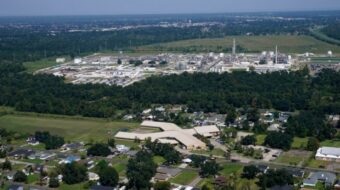
The sweltering heat has been off the charts this summer for much of the East Coast. But it’s going to get worse. And we’re very ill equipped to deal with what’s coming. So says climate scientist Heidi Cullen.
Globally, temperatures in the first half of this year have been the highest since records began 130 years ago. And in the U.S. Northeast, last month was 4 or 5 degrees hotter than average.
New York’s Central Park averaged 81.3 degrees in July, compared with the 76.5 degree average for 1971-2000. It hit a blistering 103 degrees on July 6.
Boston’s Logan Airport recorded a 77.2 degree average in July, compared with 73.9 for 1971-2000.
Philadelphia averaged 81.7 degrees, compared with 77.6 over 1971-2000. The National Wildlife Federation reports Philadelphia has had twice as many days over 90 degrees this summer as it usually has.
Washington had 20 days above 90 degrees in July, and averaged 83.1 for the month, compared to 79.2 for 1971-2000.
And the latest “State of the Climate Report” from the U.S. National Oceanic and Atmospheric Administration finds that, while there are yearly up and down variations due to natural factors like “El Nino,” the facts show a “clear and significant long-term warming trend.”
Cullen, in an article titled “The Hottest Summer,” calls this summer’s high temperatures “a troubling peek into where our weather is headed and how poorly prepared we are to deal with it.”
Within 40 years, these brutal heat conditions could be the new normal, she predicts, “assuming we continue to pump heat-trapping gases into our atmosphere at a rate similar to today.”
Using standard statistical methods and climate models, Cullen calculates that Philadelphia, which had 17 days over 90 degrees last month, could expect to have 21 such days in a typical July in 2050. A July with 11 days topping 95 (compared to seven last month) and four days over 100 (compared to two this July) could be the new norm for Philly by 2050.
Up north in Boston, instead of eight days over 90 as Beantowners experienced this July, they could face 12 in a normal July by 2050. And they’re looking at typically suffering five days over 95, compared to one such day this July, and even one day over 100, something they didn’t experience this year.
And all that is just the “typical” days – it means that by 2050, the highs will be that much higher.
Citing brownouts or power cuts caused by the high heat and air conditioners cranking overtime, Cullen says, “Our aging power grid is currently ill-equipped to deal with demands like those that are likely to be placed on it by 2050 – when the Census Bureau projects the United States will have roughly 130 million more people.”
Noting that heat is the “No. 1 weather-related killer in the United States – ahead of tornadoes, floods, or lightning strikes,” she warns, “If we can’t pass legislation to address the cause of global warming, we will most certainly have to deal with its consequences.”
To try to get ahead of the problem will require beefing up the nation’s electrical grid and adding new transmission lines, she says.
“In 20 years, a summer like the one we are having now in the Northeast will be the new normal, and the record-breaking ones will be hotter still,” Dale Jamieson and Peter Singer write in the New York Daily News. Jamieson is a professor of environmental studies and philosophy at New York University and Singer teaches bioethics at Princeton.
“Americans know that actions have consequences, but they may not realize just how irrevocable the consequences of continuing to emit increasing quantities of greenhouse gases from our coal-fired power stations, our gas-guzzling cars and our vast herds of cattle will be,” they warn.
Their op ed is titled “Take climate change off the back burner – and do it now.”
Cullen spells out what we are facing in a new book, “The Weather of the Future: Heat Waves, Extreme Storms and Other Scenes From a Climate-Changed Planet.”
Photo: nasaimages.org










